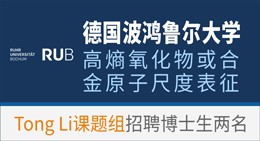Bulletin of the Comediantes Pub Date : 2024-05-21 , DOI: 10.1353/boc.2022.a927780
Jennifer Ruiz-Morgan
Reviewed by:
- Playing and Playgoing in Early Modern England: Actor, Audience and Performance ed. by Simon Smith and Emma Whipday
- Jennifer Ruiz-Morgan
THIS VOLUME is a fundamental contribution to the study of early modern theater. The double focus on playing (with attention to actors and issues of performance) and playgoing (with a focus on audiences) opens a wide lens onto the vibrant theatrical culture of Elizabethan and Jacobean England. The volume is divided into three main sections—Players, Playgoers, and Playhouses—each inviting readers to evaluate and reassess various aspects of the theatrical culture of the early modern period, such as the significance of the embodied and kinesthetic skills of actors, audience engagement, and the culture of playhouses.
The collection adopts an interdisciplinary approach, addressing debates and concerns raised by the well-established fields of theater history and performance studies. Following current tendencies in early modern scholarly research, theatrical-historical questions are examined, taking into account new approaches to the study of early modern drama, including sensory approaches, practice-as-research, the spatial turn, and new theoretical models of performance and spectatorship. Thus, the volume offers broad critical engagement with past and new debates that have shaped early modern scholarship, with such points of deliberation analyzed through the lens of emerging methodologies in the field. The result is a comprehensive and holistic understanding of actors, audience, and performance in early modern England.
Each section of the volume is divided into four chapters. Part 1, "Players," provides new perspectives on the actors' craft, drawing on new methodologies borrowed from fields such as repertory studies. Special attention is devoted to the analysis of the embodied and kinaesthetic skills of the player, in line with the new sensory turn in theater history, with its emphasis on the actors' ability to transmit embodied emotion. In chapter 1, "Shakespeare's Motists," Natasha Korda examines the significance of motion in theater. Rejecting the traditional focus on the eye–ear matrix, Korda analyzes theatrical gesture, drawing on new work on early modern embodiment, kinetic Shakespeare, and kinesthesis. Her focus lies on what she terms "kin-aesthetics," the aesthetic significance [End Page 459] of motion and action in the arts, arguing that the actor's body-in-motion has the power to move playgoers. In chapter 2, Emma Whipday focuses on the narration and performance of blanching and blushing (involuntary physical responses). She demonstrates how the onstage narration of blushing and blanching often intersects with early modern discourses on chastity, desire, shame, class conflicts, and racist stereotypes. Her analysis offers insight into early modern hierarchies of gender, class, family, and race.
In chapter 3, "Emotions, Gesture, and Race in the Early Modern Playhouse," Farah Karim-Cooper discusses the staging of racial identity in Othello (1604). Stressing the importance of critical race thinking, she explores how the racialized body shapes the network of kinetic exchanges (gestural dialogism) between the actor and the audience (affective responses). In so doing, her study demonstrates how the performance of Othello's racial identity is strongly influenced by his kinetics—not only his military stoicism and heightened passion, but also racist pantomimic gestures. In chapter 4, "The Girl Player, the Virgin Mary, and Romeo and Juliet," Deanne Williams provides an insightful historical account of the girl player in relation to the performance of virginity and the Virgin Mary. This theatrical tradition dates back to the Middle Ages, and it is exemplified by Shakespeare's Juliet, who performs her own identity as both girl and virgin.
Part 2, "Playgoers," shifts attention to early modern audiences. The contributors adopt new methodological approaches, borrowing tools from sensory studies and the history of emotions. In chapter 5, Lucy Munro analyzes apprentices' playgoing in the Jacobean period. Comparing two cases of bad apprenticeship, the fictional Quicksilver (from 1605 George Chapman's Eastward Ho!) and the real Richard Meighen (involved in a complex legal suit), Munro juxtaposes two figures who neglected their professional duties, but also obtained profit from their interest in theater. It is worth highlighting that the chapter includes unpublished research by Hulda Berggren Wallace...
中文翻译:

现代早期英国的演奏和表演:演员、观众和表演 ed。作者:西蒙·史密斯和艾玛·惠普迪(评论)
以下是内容的简短摘录,以代替摘要:
审阅者:
-
现代早期英国的演奏和表演:演员、观众和表演 ed。作者:西蒙·史密斯和艾玛·惠普迪 - 詹妮弗·鲁伊斯-摩根
西蒙·史密斯和艾玛·惠普迪,编辑。现代早期英国的演奏和表演:演员、观众和表演。剑桥大学,2022 年。350 页。
本书是对早期现代戏剧研究的根本性贡献。对表演(关注演员和表演问题)和观看演出(关注观众)的双重关注为我们了解伊丽莎白一世和詹姆士一世时期英格兰充满活力的戏剧文化打开了广阔的视野。该书分为三个主要部分——《演员》、《观众》和《剧场》——每个部分都邀请读者评估和重新评估现代早期戏剧文化的各个方面,例如演员的体现和动觉技能的重要性、观众参与度,以及剧场文化。
该收藏采用跨学科的方法,解决了戏剧历史和表演研究成熟领域所引起的争论和担忧。遵循早期现代学术研究的当前趋势,探讨戏剧历史问题,同时考虑早期现代戏剧研究的新方法,包括感官方法、实践即研究、空间转向以及表演和表演的新理论模型。观众。因此,本书对塑造早期现代学术的过去和新的辩论进行了广泛的批判性参与,并通过该领域新兴方法论的视角对这些审议要点进行了分析。其结果是对现代早期英格兰的演员、观众和表演有了全面、整体的理解。
本书的每个部分分为四章。第 1 部分“演员”借鉴了剧目研究等领域的新方法,为演员的技艺提供了新的视角。特别关注对演员的具身和动觉技能的分析,符合戏剧史上新的感官转向,强调演员传递具身情感的能力。在第一章“莎士比亚的运动派”中,娜塔莎·科达探讨了戏剧中运动的重要性。科达拒绝传统上对眼耳矩阵的关注,借鉴了早期现代体现、动态莎士比亚和动觉的新作品,分析了戏剧姿态。她的重点在于她所说的“亲美学”,即艺术中运动和动作的美学意义[结束第459页],她认为演员的身体运动具有感动观众的力量。在第二章中,艾玛·惠普迪重点关注了脸色变白和脸红(不自觉的身体反应)的叙述和表演。她展示了舞台上的脸红和脸色苍白的叙述如何经常与早期现代关于贞洁、欲望、羞耻、阶级冲突和种族主义刻板印象的话语相交叉。她的分析提供了对现代早期性别、阶级、家庭和种族等级制度的洞察。
在第三章“早期现代剧场中的情感、手势和种族”中,法拉·卡里姆-库珀讨论了《奥赛罗》(1604 年)中种族身份的呈现。她强调了批判性种族思维的重要性,探讨了种族化的身体如何塑造演员和观众(情感反应)之间的动态交换网络(手势对话)。通过这样做,她的研究证明了奥赛罗的种族身份的表现如何受到他的动力学的强烈影响——不仅是他的军事坚忍和高度的热情,还有种族主义的哑剧手势。在第四章“女球员、圣母玛利亚和罗密欧与朱丽叶”中,迪安·威廉姆斯对女球员与童贞和圣母玛利亚的表现进行了富有洞察力的历史叙述。这种戏剧传统可以追溯到中世纪,莎士比亚笔下的朱丽叶就是一个例子,她扮演着女孩和处女的身份。
第二部分“观众”将注意力转向早期现代观众。贡献者采用了新的方法论,借用了感官研究和情感历史的工具。在第五章中,露西·门罗分析了詹姆士一世时期学徒的玩耍行为。门罗比较了两个糟糕的学徒案例:虚构的快银(来自 1605 年乔治·查普曼的《向东的浩!》)和真实的理查德·梅根(卷入复杂的法律诉讼),蒙罗将两个忽视专业职责但也从利益中获利的人物并列在一起。在剧院里。值得强调的是,本章包括胡尔达·伯格伦·华莱士 (Hulda Berggren Wallace) 未发表的研究……

































 京公网安备 11010802027423号
京公网安备 11010802027423号